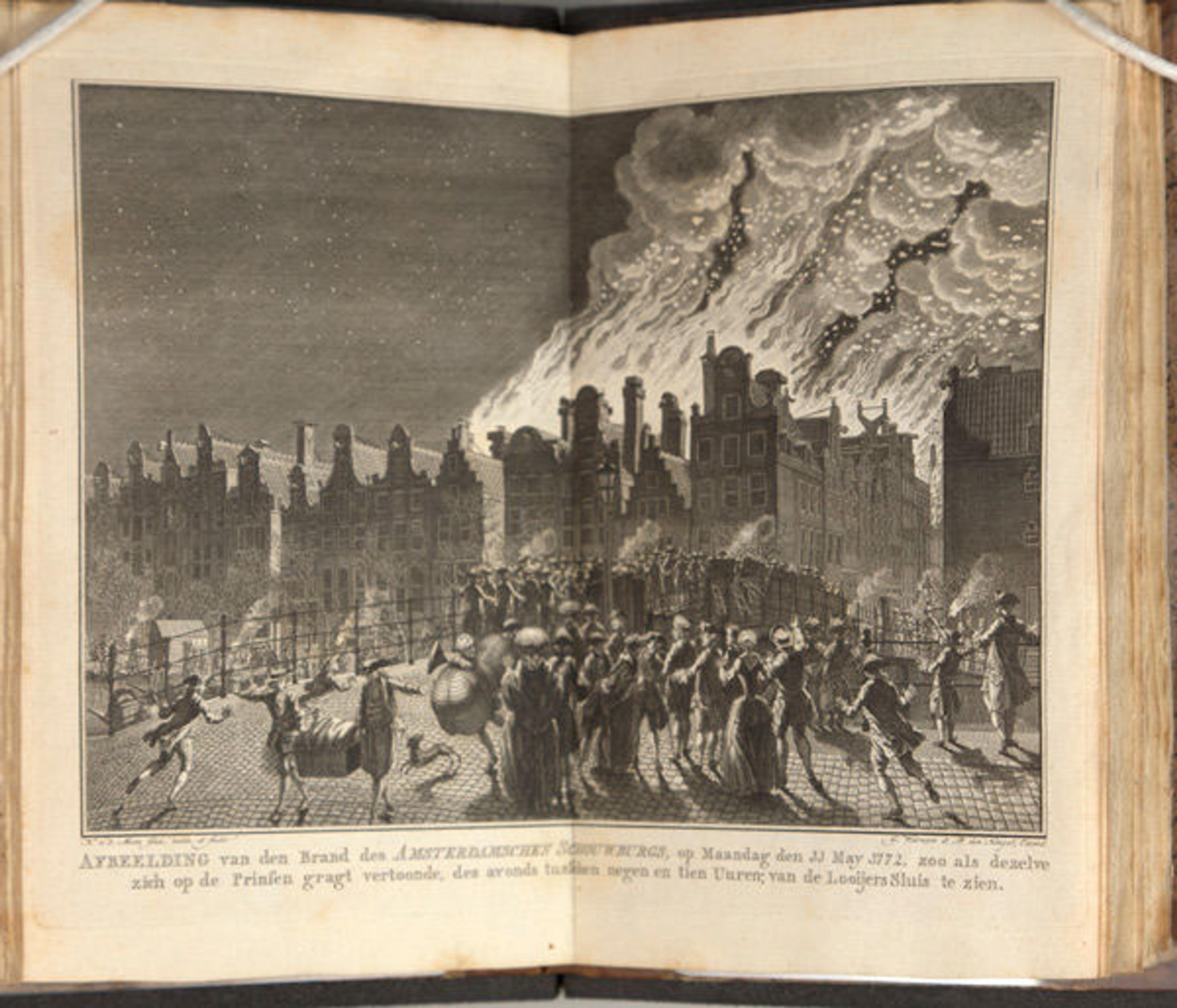
Engraved plate from Historie van den Amsterdamschen Schouwburg (History of the Theater of Amsterdam), 1772. Translated caption: "Depiction of the fire in the Amsterdam Theater on 11 May 1772, the way it showed itself from the Prinsen gracht [canal], that evening between nine and ten as seen from the Looierssluis."
«Topography books are often consulted for their illustrations which record landscapes, cityscapes, architecture, gardens, and infrastructure, as well as examples of culture and customs from around the world. Since they are a valuable documentary tool for researchers and curators, these illustrations commonly appear in scholarly articles and exhibitions. For the first six months of 2014, an exquisite collection of 204 early modern topography books with Dutch origins underwent conservation here at the Met. These books, originally published in several countries between 1575 and 1825, are now held in the collection of the Museum's Department of Drawings and Prints. Femke Speelberg, an assistant curator in the department, served as project leader and selected the titles for conservation.»
An initial assessment determined that several treatment techniques would be required. The books come in all shapes and sizes and are bound with various materials such as leather, cloth, or vellum. Twenty-four books needed rebacking, meaning that the boards were detached or the spine lining was loose, therefore compromising the binding structure and making future handling risky. Some volumes had warped vellum and leather-covered boards, which were humidified and flattened to put less strain on the joints. Other common conservation treatments performed over the course of this project included cleaning soiled text blocks, rehousing, and creating new protective enclosures determined by the size and weight of each book. Some highlights of the collection, along with notes on conservation work, are outlined below.
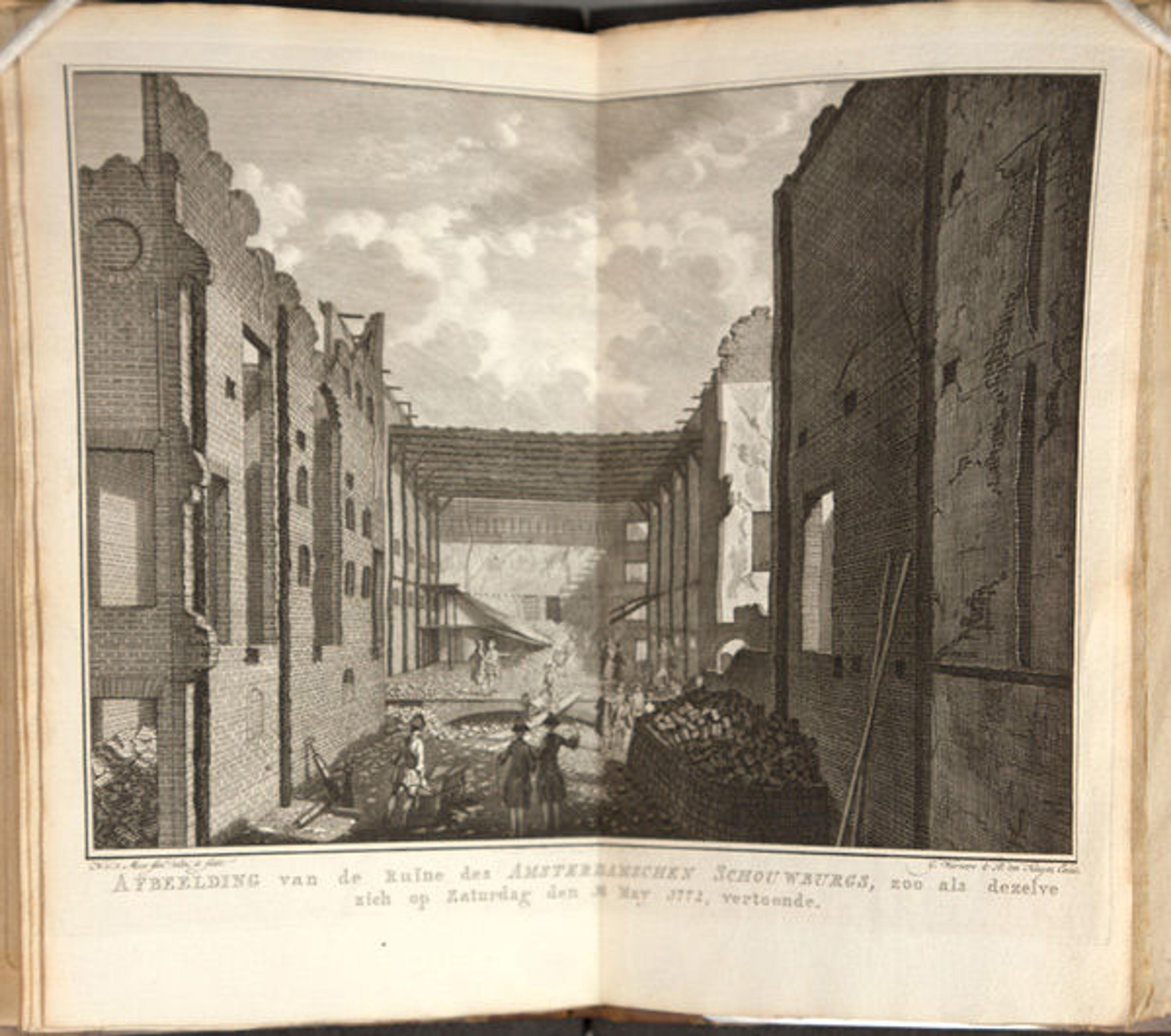
Engraved plate from Historie van den Amsterdamschen Schouwburg (History of the Theater of Amsterdam), 1772. Translated caption: "Depiction of the ruin of the Amsterdam Theater as it showed itself Saturday 16 May 1772."
The Historie van den Amsterdamschen Schouwburg (History of the Theater of Amsterdam) includes engravings by artists Simon Fokke and Noach van der Meer the Younger that depict a fire in an Amsterdam theater. The magnificent folio-size prints (at top and above), illustrating the progression of the fire until the theater is reduced to a pile of bricks, are tipped in.
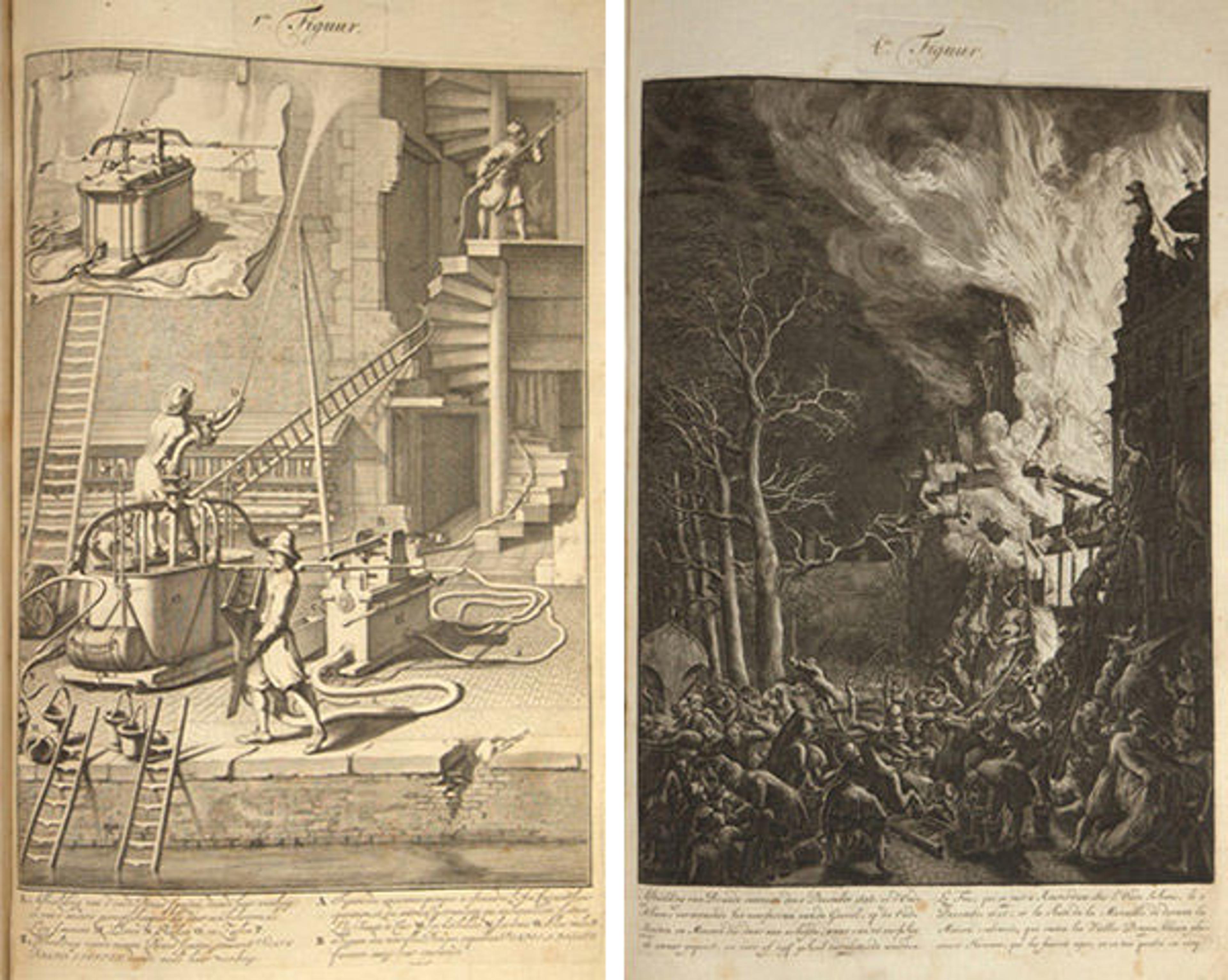
Figures 1 (left) and 4 (right), engravings from Beschryving der Nieuwliks uitgevonden en Geoctrojeerde Slang-Brand-Spuiten (Description of the Newly Invented and Patented Firehoses), 1690
The Amsterdam fire marshals Jan van der Heide and his son, Jan van der Heide the Younger, published Beschryving der Nieuwliks uitgevonden en Geoctrojeerde Slang-Brand-Spuiten (Description of the Newly Invented and Patented Firehose) in 1690. Van der Heide the Elder's compositions are characterized by a great mastery of light and shade and the rendering of minute detail. These skills come to the fore in this collection of engravings that grew out of his work with the city's fire brigade, for which he assumed responsibility in 1673. This vellum-bound book depicts the firefighting methods of the day (to which van der Heide contributed a new invention, a water-pumping mechanism), including instructions for the use of flexible fire hoses.
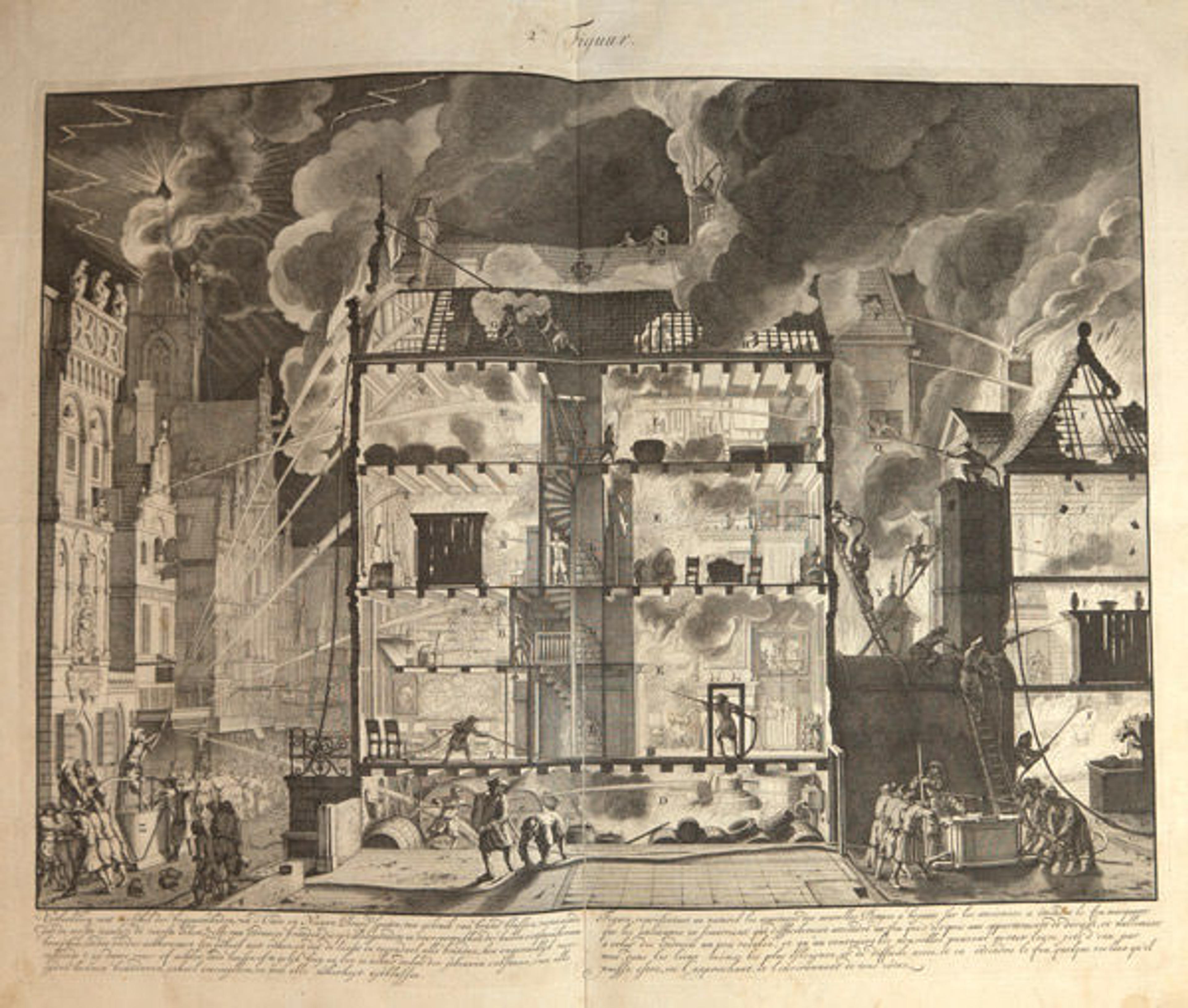
Figure 2, engraving from Beschryving der Nieuwliks uitgevonden en Geoctrojeerde Slang-Brand-Spuiten (Description of the Newly Invented and Patented Firehoses), 1690
The three plates illustrated above represent fires that were extinguished by means of the new engines and the various ways in which these engines could be employed with advantage.
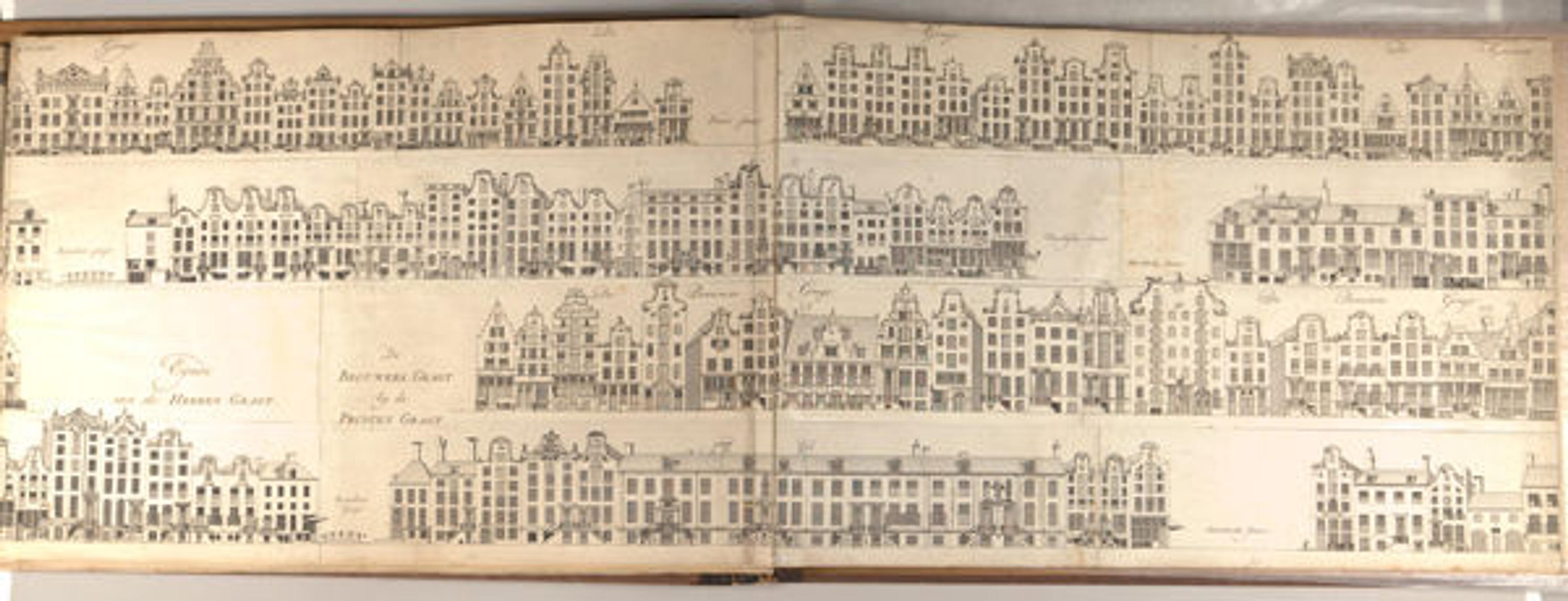
Plates from Verzaameling van alle de huizen (. . .) langs de (. . .) grachten der stadt Amsteldam, 1768–71 (46.50.1)
Cityscape topography is exemplified by Verzaameling van alle de huizen (. . .) langs de (. . .) grachten der stadt Amsteldam (1768–71), shown above—an accordion-style binding constructed with twenty-four plates, each consisting of four rows of etchings pasted on wove paper, all depicting labeled streets and buildings in Amsterdam. The plates for both sides of the canals have been hinged together so that the houses are all facing the same direction.
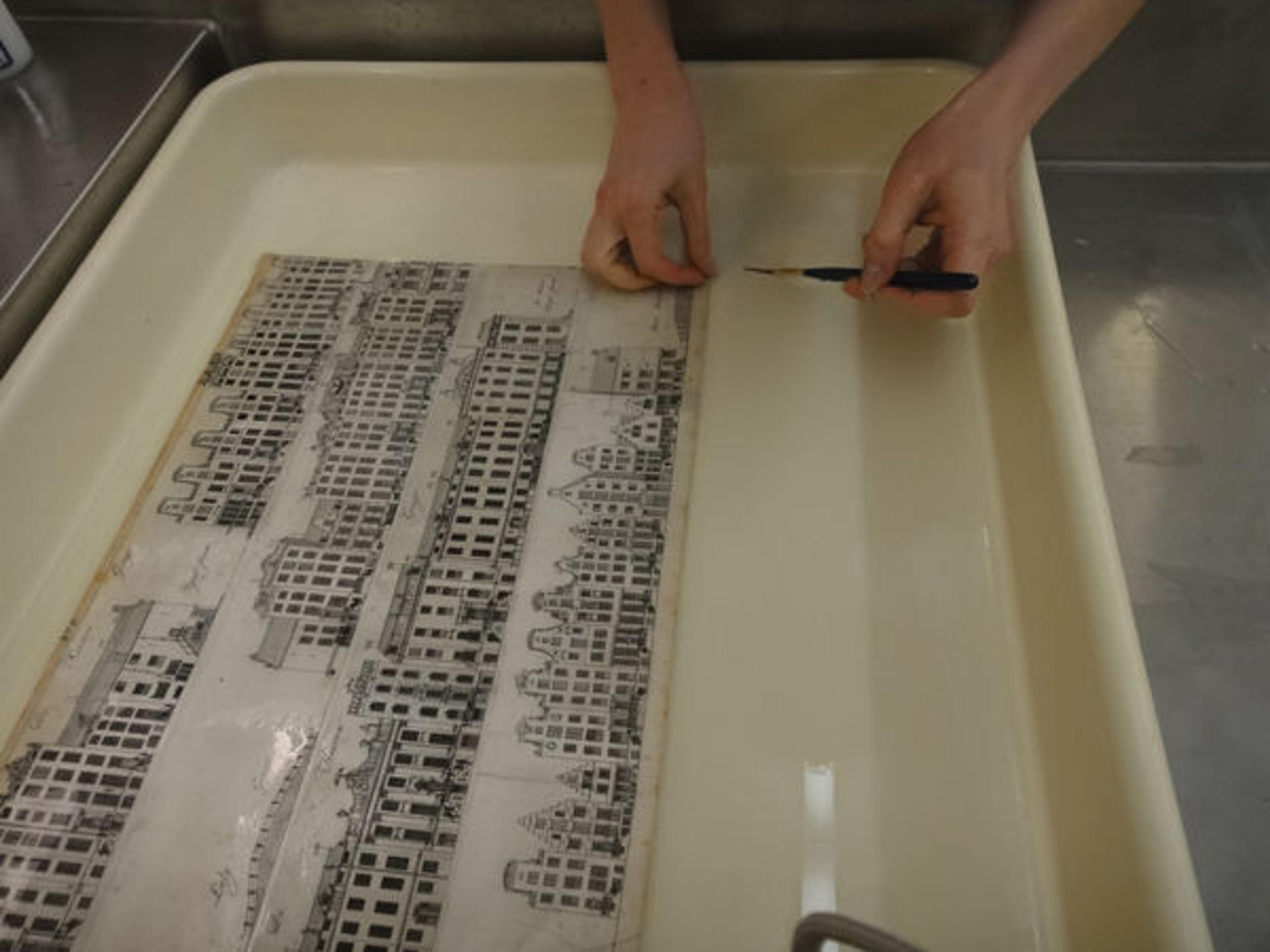
Removing linen tape hinges in a bath of deionized water from the plates in Verzaameling van alle de huizen (. . .) langs de (. . .) grachten der stadt Amsteldam, 1768–71 (46.50.1)
Before treatment, the text block was lifting away from a case with a leather spine and cloth-covered boards, and the plates were tearing at the hinges. During treatment, the discolored, torn linen hinges were removed by aqueous methods; the plates were then dried and rehinged with Okowara Japanese paper and wheat-starch paste. The case was cleaned, consolidated, and housed separately from the text block so that the plates could be displayed easily, if desired.
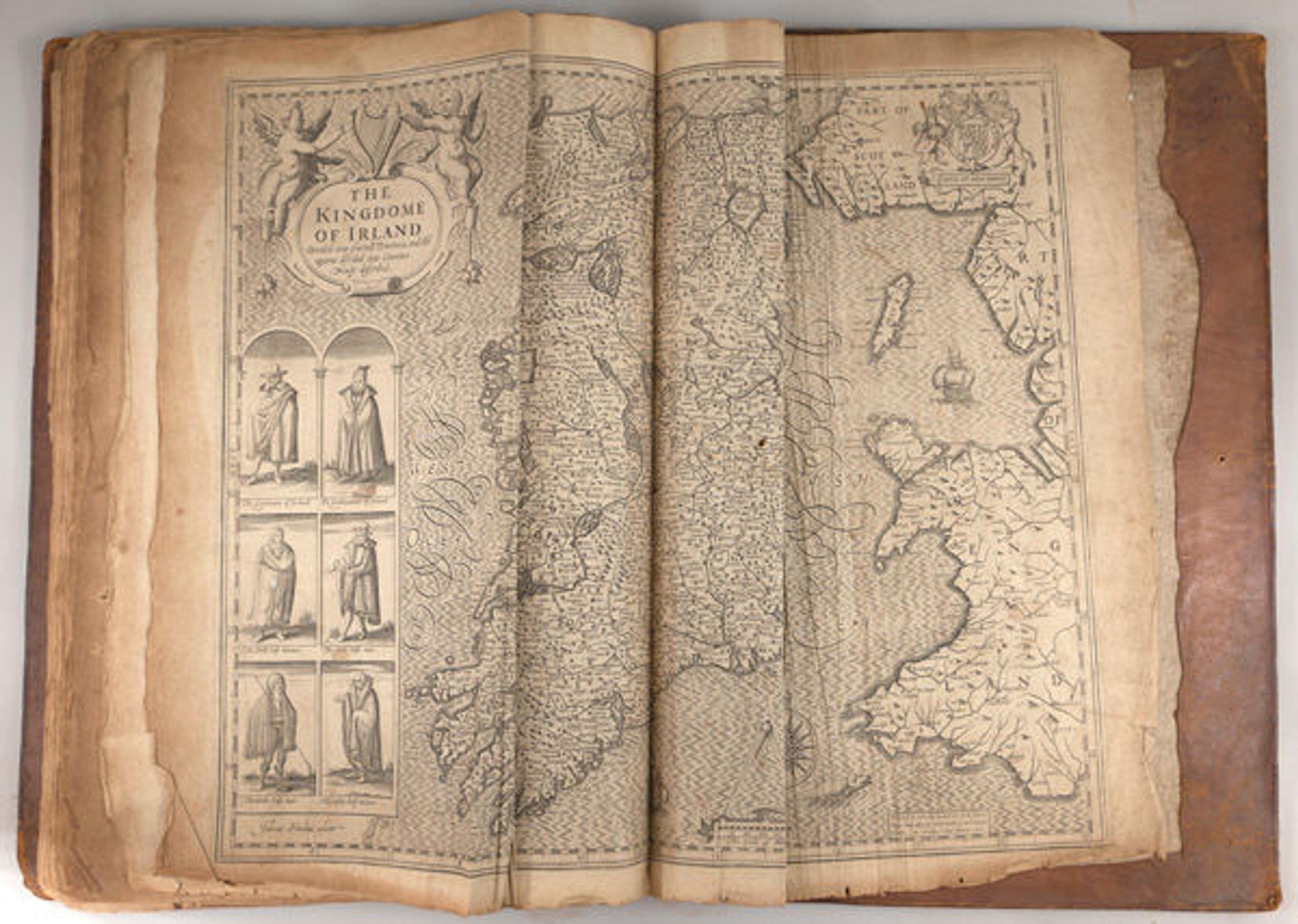
Before-treatment view of A Prospect of the Most Famous Parts of the World . . ., 1631 (Bequest of W. Gedney Beatty [41.100.207]) showing soiling, creases and paper losses
Culture and customs are abundantly shown in the 1631 publication A Prospect of the Most Famous Parts of the World . . . Although attributed to John Speed in the title, the maps are anglicized copies of contemporary Amsterdam maps from the designs of Willem Blaeu, Pieter van den Keere, Claes Jansz Visscher, and the Hondius-Jansson family. They are known as cartes à figures and include side panels depicting costumed figures, town plans, and views. This genre was popularized by Jodocus Hondius Sr., the earliest examples being from his time in England, and his competitors were quick to adopt the practice. The particular appeal to the publisher, George Humble, was probably the similarity in style between these maps and the county maps in The Theatre of the Empire of Great Britaine.
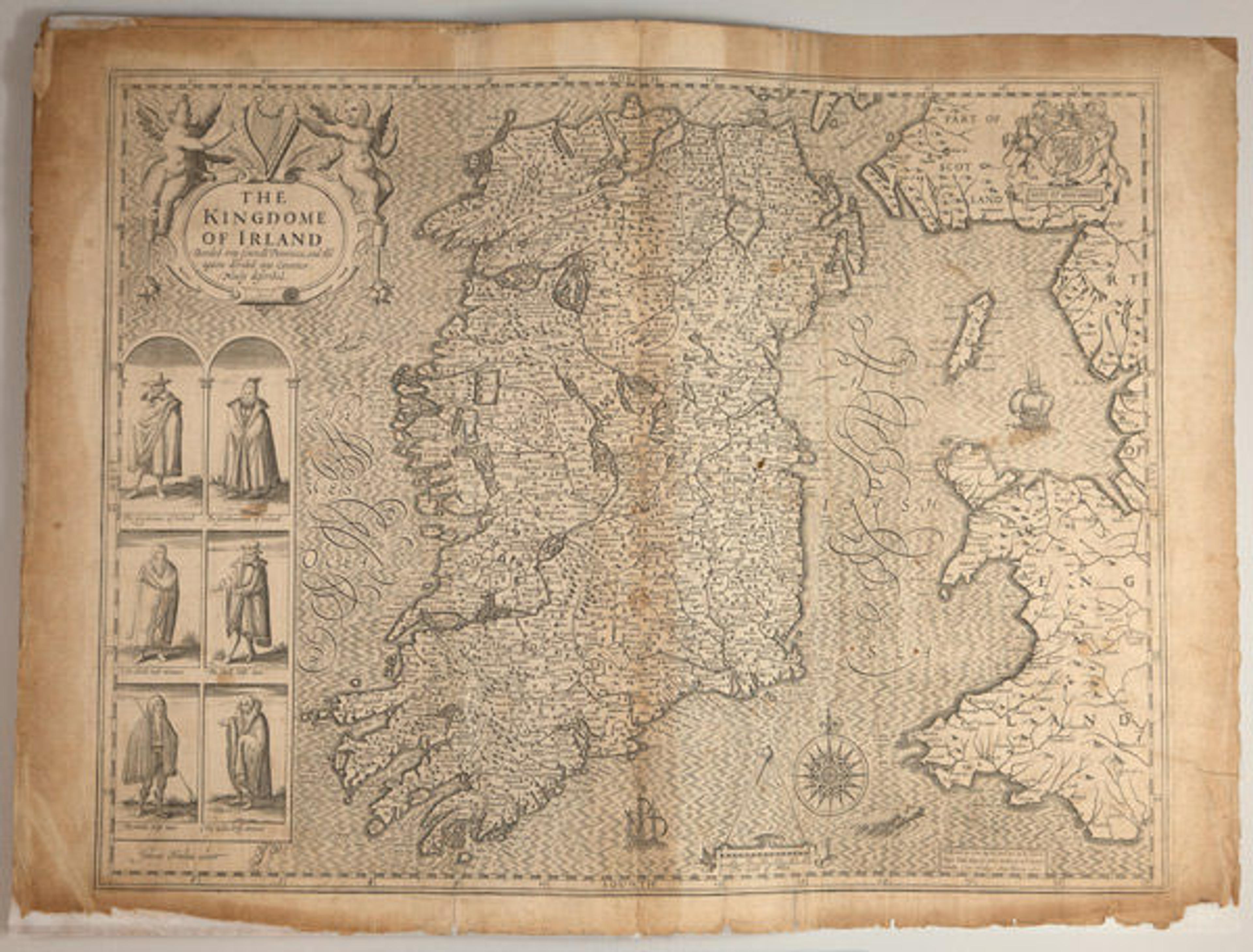
After-treatment view of "The Kingdome of Ireland" from A Prospect of the Most Famous Parts of the World . . ., 1631 (Bequest of W. Gedney Beatty, 1941 [41.100.207])
The treatment required repairing heavily soiled and creased pages with numerous losses on the edges. The leaves were humidified in situ, then flattened and dried between blotter sheets to eliminate the creases; when dry, the losses on the edges were filled.
The 204 early modern topography books are now properly housed and ready to be exhibited. Both Museum staff and the public may arrange access to these rare books in the Department of Drawings and Prints Study Room. For those unable to visit the Museum, the collection is available to the public virtually via the Museum's The Collection Online.
The project was funded by a generous grant from the Discretionary Aid Program of the New York State Program for Conservation and Preservation of Library Research Materials, the twentieth year that The Metropolitan Museum of Art was granted money by this program. I look forward to beginning work on the next two proposed projects: French Architectural Books: Renaissance to Art Deco and How Did They Do That? Early Modern Instruction Books from Alphabets to Pyrotechnics.